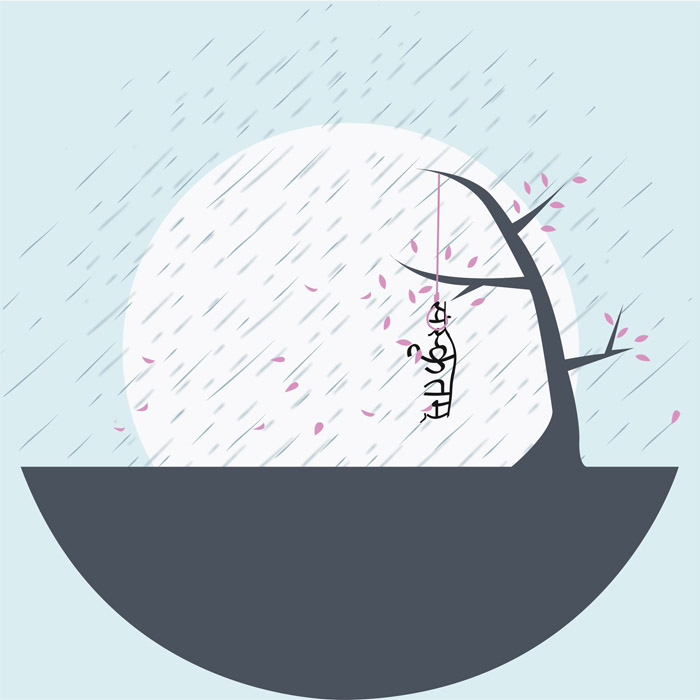Languages of the world are becoming extinct at an alarming rate, and with them, entire cultures, histories and cognitive habits – and possibilities – are disappearing forever. Yet, there is a surprising lack of awareness and concern over this epic loss. Nitasha Kaul brings into focus the issues involved.
Language houses the memory of a people. We exist, to a great extent, within the thought categories we structure through the words we use, and how they reflect the histories of our way of living and understanding the world around us. Language is an immensely significant marker of identity.
It is not surprising, then, that those who are not seen to share our identity have been called ‘barbarian’ by many different groups since antiquity. Etymologically, a ‘barbarian’ was not only foreign, but also someone whose unintelligible language and/or stammering speech was alien to our own. Similarly, the use of shibboleths in various cases (ranging from the Hebrew Bible’s mention of the killing of Ephraimites thousands of years ago to the Dominican Parsley Massacre of Haitians in 1937) meant that many thousands have been killed because they failed the identity test which required them to prove their belonging by pronouncing a word correctly.
Language has thus often been a proxy for culture, and shared across national borders (in this context, the relationship of language and the dominant political entity of the nation- state has been peculiarly vexed in modern times, as exemplified by ethnic exclusion and irredentism). And like peoples, languages too have grown, died, moved around, and evolved throughout history.
The world has about 7000 languages and just 4% of these are spoken by 96% of the world’s population. It is estimated that over the next 100 years, 90% of the world’s languages will die.
When a language dies, a unique slice of human history is lost. Humanity’s past is littered with dead languages. Academics like Mark Janse point to Asia Minor as a known “linguistic killing-field”, where almost all indigenous languages became extinct under the pressures of Hellenization. And, while languages have always died, in our times, there is an especially accelerated rate of language death.
The statistics, from linguist David Crystal, are sobering. Currently, 8 languages over 100 million (Mandarin, Spanish, English, Bengali, Hindi, Portuguese, Russian, Japanese) have 2.4 billion speakers, and top 20 languages are spoken by 3.2 billion people. The world has about 7000 languages and just 4% of these are spoken by 96% of the world’s population. It is estimated that over the next 100 years, 90% of the world’s languages will die. On an average, that means one language dies on the planet every two weeks. Analysts tell us that 96% of the world’s languages are spoken by just 4% of the global population (reversing the statistic above), that a quarter of world’s languages are spoken by less than 1000 people, over half by less than 10000, and that almost 500 languages have less than 100 speakers, 51 with just one speaker.
Languages die in many ways – gradually due to evolution, change and mixing, or suddenly due to natural phenomena. And, this linguicide – literally, the killing of language – is also a deliberate result of government political prohibitions on the use of language (curtailing people’s linguistic rights) as a component of assimmilation or genocide. Recent histories of Soviet policies in Ukraine in the twentieth century reveal the potent effects of documents titled “Nationalist Threats on the Language Front” and “Register of Repressed Words”. And, among others, the experiences of Native Americans, aboriginal peoples in Australia, the first nation peoples in Canada are other examples of how entire populations have lost their languages, histories and a sense of their indigenous culture. Native languages have often been seen as as a nationalist threat to unjustified centralising powers, from the Ems Ukase of 1876 (decree of Alexander II, Tsar of Russia, forbidding use of Ukranian language), to Thatcher’s ban on broadcasting of the voice of Sinn Féin leader Gerry Adams in the 1980s and 1990s UK, to the continued language suppression issues faced by the Kurdish people in Turkey (an inspiration for Harold Pinter’s play Mountain Language about the universal suppression of language as a part of injustice). Many post-colonial children of a certain generation in South Asia (an experience shared in much of Africa) will recall the educational drive towards the language of the erstwhile colonisers, whereby punishments or fines were handed out to children in ‘good’ schools for using native languages.
And so, English has come to be the currency of contemporary global expression. The massive processes of colonialisation (both in its earlier and then modern European versions) and globalisation have largely led to a drive towards this monolingualism (though now there are many ‘world-englishes’). And, this is how (to quote John Sutherland writing in The Independent, UK, 10 March 2002) “a dialect, spoken by a backward, semi-literate tribe in the south-eastern corner of a small island in the North Sea spread, like some malign pandemic virus, across the globe”.
Since the 1990s especially, there has been an explosion of literature on linguicide from several cognate disciplines. Vastly improved language data is also available online through resources such as the UNESCO Atlas of the world’s languages in danger (http:// www.unesco.org/culture/languages-atlas/index.php) or the earlier Ethnolgue (http:// www.ethnologue.com). However, recent decades have also been witness to debate about the course of future action concerning linguicide. At one extreme are those who take the view of commentators such as Kenan Malik who writes: “What if half the world’s languages are on the verge of extinction? Let them die in peace”. This view stresses merely the communicative function of language, and imagines that attempts to save dying languages have romantic aims which do not help the people who would be better served by speaking the more dominant languages. A more nuanced academic version of this view is that taken by the Congo-born Chicago linguist Salikoko Mufwene who claims to focus on the ecology of language evolution by questioning the usual accounts of language death and arguing that it has not been uniformaly catastrophic. He writes that “languages and cultures at any given point in time are commodities with ‘market values’…which are subject to competition and selection”. Like the tenets of neoclassical economics, this economically determinist perspective emphasises the ‘choice’ aspect as opposed to the constraints faced by speaking communities. Such focus on the socioeconomic interests of language speakers stops us from considering why and how the confluence of powerful economic interests lead to the attrition of some languages, and what this means in the long run. The contrary, and to my mind, more relevant position (for instance, arguments of linguists such as Louis- Jean Calvet, Joshua Fishman, Michael Krauss) is the one which treats language as not merely communicative, but also as a repository of numerous other functions including emotive, poetic, and referential. Attempts to preserve and maintain dying languages also have a link with strengthening the human rights of the endangered speaking communities involved. The disciplinary field of ‘revival linguistics’ includes taking steps to make endangered languages sustainable, reviving speech and reversing language death. In contrast to the ancient story of the Tower of Babel, the multiplicity of the human tongues is a reminder of human power, imagination, otherness, reciprocal understanding and ethics. To quote Goethe: “those who know nothing of foreign languages, know nothing of their own”.
Look at the lists of many untranslatable words from other languages that keep circulating on the web, and you cannot contest that they reflect, at a minimum, a certain perception that may not be exactly translatable into other languages. The point being that when we lose languages, we lose something of the beauty and acuity of their distinct and special expression.
We are many. Many are our names. And many histories. Akin to the biodiversity of the planet (where the recognition of loss is easier to recognise), losing languages is also an irreplaceable loss of unique ways of thinking. Whatever specific version of linguistic relativity (the misnamed Sapir-Whorf Hypothesis which, roughly speaking, stands for the determination, or at least, influence, of languages upon structures of thinking) one agrees with, it cannot be denied that a specific language has some effect upon thinking. Look at the lists of many untranslatable words from other languages that keep circulating on the web, and you cannot contest that they reflect, at a minimum, a certain perception that may not be exactly translatable into other languages. The point being that when we lose languages, we lose something of the beauty and acuity of their distinct and special expression. Additionally, from a gender perspective, it isn’t just that men and women use the same language differently (a point taken further by the linguist and science fiction writer Suzette Elgin when she created a new constructed language in the 1980s, called Ládaan, to reflect women’s views), it is also that there are historical languages that express social communication between specific sub-groups such as women. An example is Nüshu, the women-only Chinese language of the women of the Yao ethnic group in the Jiangyong county in Hunan province in southern China. This language, which could date back a thousand years, is now almost extinct. It was a language that allowed an expression of a social bond between women in a Laotong relationship (kindred sisters for eternity). Between the first time I saw a BBC report about the dying of Nüshu (and Chinese attempts to preserve it in a new museum) in 2002, and 2011 when a movie (Snow Flower and the Secret Fan) dramatised the laotong relationship on screen, the last woman (among the 2.9 million ethnic Yao people) who could write in this script has died. The unquantifiable history, memory, and culture we lose with the death of a language cannot be reflected in an economic calculus alone. More recently, in 2010, the last known speaker of Bo, an ancient language of the Andamans, died. There is a long list of many other last known speakers of a language.
Could you dare imagine how it is to think and feel in a language that once was shared but now only you know, and you know too that those unspoken words and thoughts will die with you?


